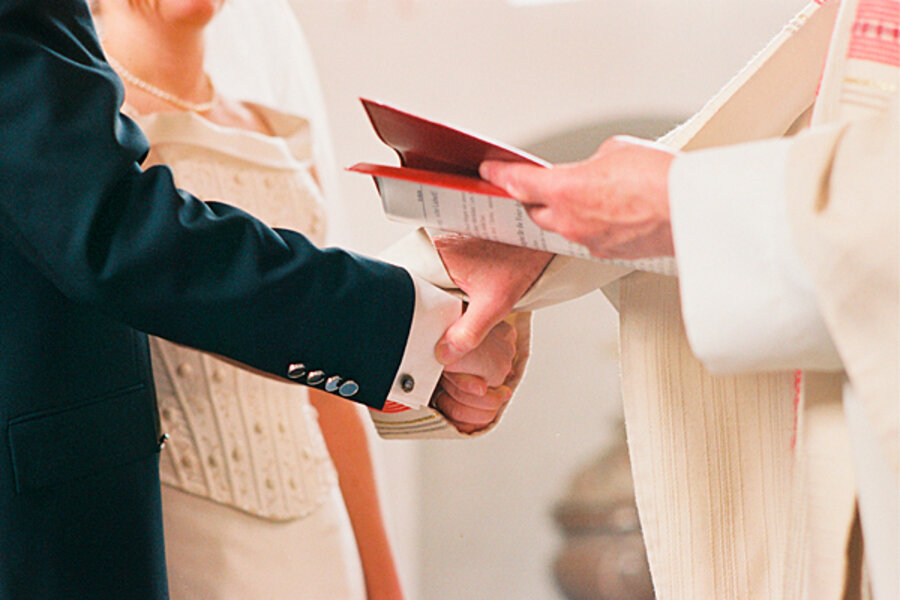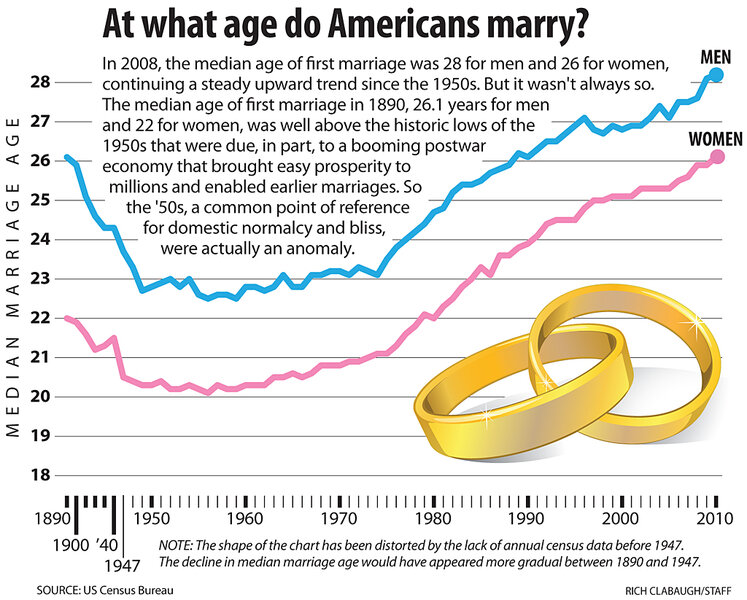How have Americans redefined marriage? Simply put, marriage is being treated as more of an option today. The institutional model of marriage – in which marriage is a pragmatic system for providing kinship and mutual aid and raising a family – has given ground to a soulmate model, in which partners focus on finding an intense emotional connection.
The result? Americans’ expectations of marriage are far higher than those of their parents or grandparents. “We expect more from our marriages than we used to, and we need them less,” says Stephanie Coontz, a marriage and family studies expert and author of “Marriage, a History.” “People feel far less compelled to enter [marriage] – or to stay in it – if they’re not getting the intimacy they want.”






